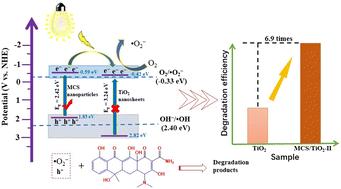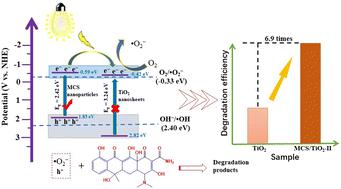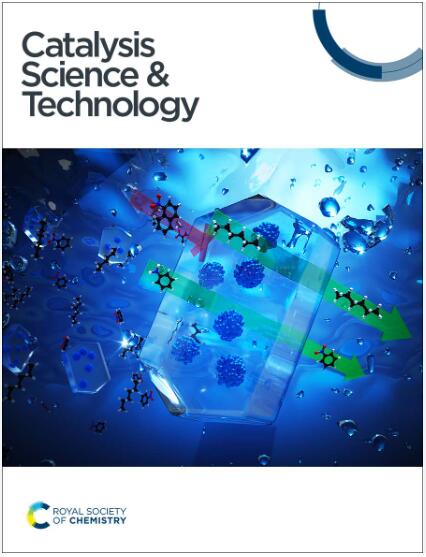在 TiO2 纳米片上沉积 Mn0.5Cd0.5S 纳米粒子的简便原位构建策略,用于高效可见光光催化降解四环素
IF 4.2
3区 化学
Q2 CHEMISTRY, PHYSICAL
引用次数: 0
摘要
由于二氧化钛的光生电子/空穴重组率高和可见光响应范围窄,开发一种高效的可见光驱动的二氧化钛基光催化剂来降解四环素仍然具有挑战性。为了解决这些问题,研究人员通过将 TiO2 纳米片与 Mn0.5Cd0.5S 纳米颗粒耦合,制备出新型异质结,作为可见光光催化剂。由于能级匹配良好,所合成的光催化剂表现出较高的光生电子/空穴分离效率和较强的可见光吸收能力,从而在可见光照射下高效降解四环素,并具有良好的可回收性。最佳 MCS/TiO2-II 光催化剂在 120 分钟内的降解效率可达 90%,分别是 MCS 和 TiO2 的 2.5 倍和 6.9 倍。此外,基于捕集实验、XPS、光电化学表征和 DFT 计算,深入揭示了四环素的降解机理。因此,这项工作为探索在可见光下实现高效去除难降解四环素的优异光催化剂提供了有效途径。本文章由计算机程序翻译,如有差异,请以英文原文为准。


Facile in situ construction strategy to deposit Mn0.5Cd0.5S nanoparticles on TiO2 nanosheets for highly efficient visible light photocatalytic degradation of tetracycline
Developing a highly efficient visible-light-driven TiO2-based photocatalyst for the degradation of tetracycline remains challenging due to the high photogenerated electron/hole recombination rate and narrow visible light response range of TiO2. To address these problems, novel heterojunctions are fabricated by coupling TiO2 nanosheets with Mn0.5Cd0.5S nanoparticles as visible-light photocatalysts. The as-synthesized photocatalysts exhibit high photogenerated electron/hole separation efficiency and enhanced visible-light absorption due to the well-matched energy levels, leading to the highly efficient degradation of tetracycline under visible light irradiation and excellent recyclability. The degradation efficiency of the optimum MCS/TiO2-II photocatalyst could reach 90% within 120 min, which was about 2.5 times and 6.9 times higher than those of MCS and TiO2, respectively. Furthermore, the degradation mechanism of tetracycline was revealed in depth based on the trapping experiments, XPS, photoelectrochemical characterizations, and DFT calculations. Therefore, this work provides an effective approach to explore excellent photocatalysts to realize the highly efficient removal of refractory tetracycline under visible light.
求助全文
通过发布文献求助,成功后即可免费获取论文全文。
去求助
来源期刊

Catalysis Science & Technology
CHEMISTRY, PHYSICAL-
CiteScore
8.70
自引率
6.00%
发文量
587
审稿时长
1.5 months
期刊介绍:
A multidisciplinary journal focusing on cutting edge research across all fundamental science and technological aspects of catalysis.
Editor-in-chief: Bert Weckhuysen
Impact factor: 5.0
Time to first decision (peer reviewed only): 31 days
 求助内容:
求助内容: 应助结果提醒方式:
应助结果提醒方式:


